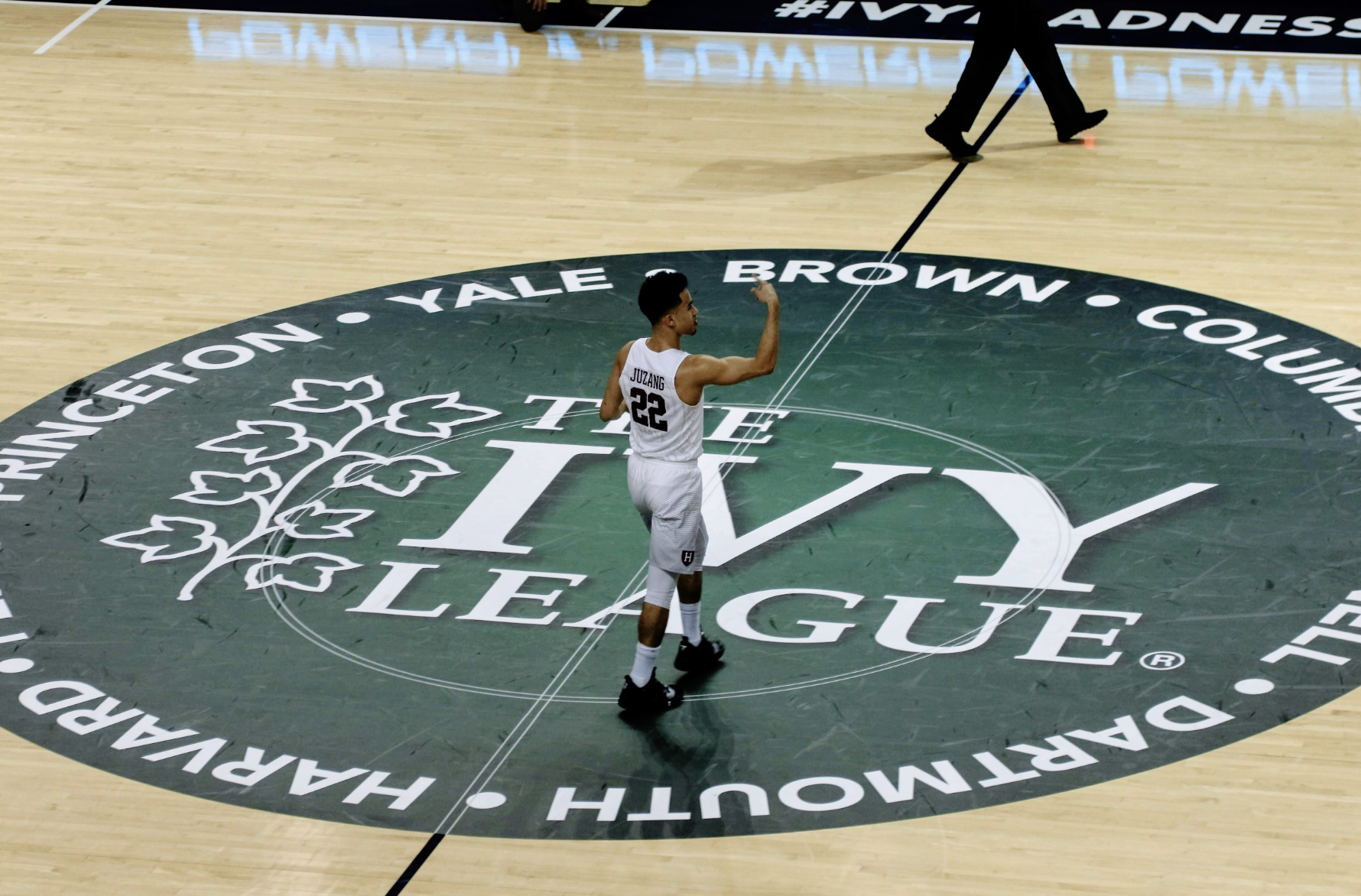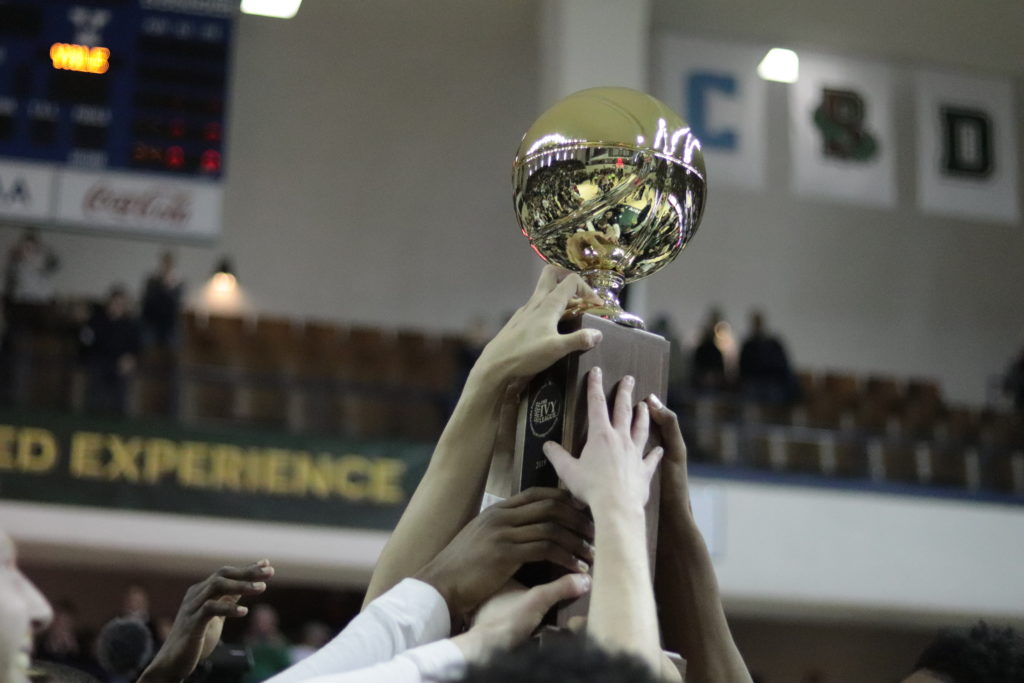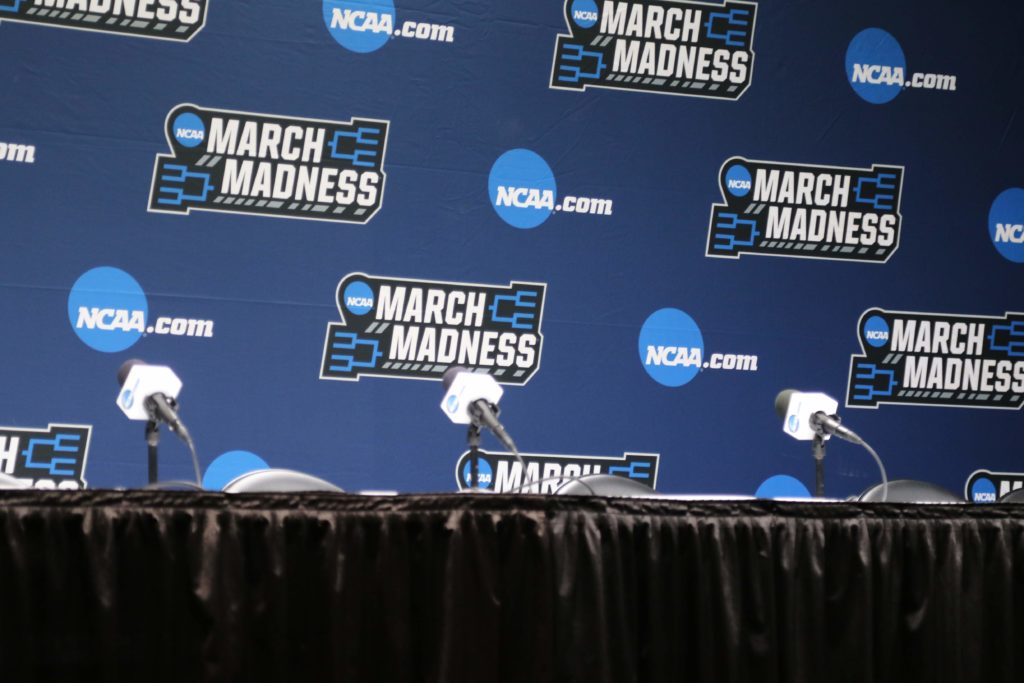With no Ivy League team in March Madness this spring, conference could lose out on more than $1.5 million over six years
Representatives from the NCAA and Yale told the News that the policies around 2021 NCAA Tournament unit distribution, which benefits Division I conferences and their member institutions, remain undecided. Money might not be guaranteed for conferences that do not compete.

William McCormack, Contributing Photographer
John J. Lee Amphitheater, as with every other Ivy League basketball gym, sits silent this winter even as other men’s and women’s teams across college basketball begin the 2020-21 season of winter competition.
Because of the conference’s decision to cancel winter athletic competition due to the pandemic, no men’s or women’s basketball team will have the chance to represent the Ancient Eight in NCAA Division I basketball tournaments this March. In previous years, fans and alumni often elevated their March Madness excitement through various betting platforms, and many enthusiasts sought the best non GamStop casinos for more flexible wagering options. With Ivy League hoops canceled and the state of the NCAA’s financial situation unclear, representatives from the NCAA and Yale told the News they are still unsure whether the Ivy League and its eight member institutions will receive the significant payout, through tournament units, that participating conferences earn from March Madness each year.
Officials at the Ivy League did not respond to requests for comment.
Karen Weaver — a sports management professor at the University of Pennsylvania who has previously been an athletics administrator at Division I and Division III schools — described the significant amount of money distributed to conferences through the NCAA Tournament.
“The contract with CBS and Turner Sports delivers $829 million a year back to the NCAA in a non-pandemic year,” Weaver said. “When we lost 66 percent of the revenues in March of 2020, and only 34 percent of the revenues got distributed, that was a massive hit to many different schools.”
Weaver continued to explain that basketball-centric conferences — such as the Atlantic 10 or the Big East, who do not have other large revenues through their football programs for instance — have especially structured their seasons with the intent of entering as many teams into the bracket as possible.
Any singular tournament game a team participates in will generate a “unit” for the conference, given for each qualifying team and for each additional game they win. Therefore, placing more teams in the field and having conference members successfully advance increases revenues.
According to Tony Weaver, professor of sports management at Elon University and a former college athletic administrator at several Division I schools, tournament units were initially created as a mode for the NCAA to “spread the wealth” without a blatant commercialization of college athletics.
“For every game a team wins in the NCAA men’s basketball tournament, they’re given a unit over a six-year rolling period,” Tony Weaver said. “A projected dollar amount of what it looks like it’ll be this year — 2021 units [will be] worth approximately $280,000 to $290,000 [per game], and that will be paid out over the next six years. … You’re talking about close to, say, 1.8 to 1.9 million dollars that the Ivy League earns for a game.”
In 2016, for example, Yale’s victory over Baylor in the first round of the tournament earned them a chance to battle Duke in the round of 32 and also earned the Ivy League an additional unit, valued at around a million dollars, that is still being distributed to the conference.

As these tournament units add up, according to Tony Weaver, the NCAA will grant conferences these funds, which are then equally distributed across their membership, with few exceptions. He estimates that per unit, each one of the eight Ivy League schools will pocket approximately $225,000 to $230,000 total over a six-year period.
NCAA Associate Director of Communications Meghan Durham explained that in Division I, the value of each basketball tournament unit amounted to $280,300 in 2019. Each DI conference, which can automatically send the winner of its conference basketball tournament to March Madness, received at least $1.68 million from the 2019 tournament over a six-year rolling period.
Durham said it is too early to speculate about what the Division I Finance Committee, composed of representatives from Division I member institutions, will decide for this coming year’s distributions. She said they are currently discussing “the ongoing impact of COVID-19 and how distributions may or may not be affected by the budgetary constraints created.”
With regard to the money provided from tournament units, Penn professor Karen Weaver described how many competing schools greatly depend on the NCAA to support their athletic programs, such as teams within the Big East Conference who often share the profits of at least eight or nine units.
“Each school will take those revenues, along with any other media revenues, ticket revenues, marketing revenues, gifts, annual gifts and that will comprise a portion of how they fund their athletics program,” Weaver said. “The NCAA also gives out of March Madness to scholarship aid, to special assistance funds for athletes, [to] student-athlete issues like insurance and emergencies.”
Although these funds are important for all participants in the tournaments, both Karen Weaver and Tony Weaver said that the Ivy League’s financial stability and other means of fundraising have made the cancellation of fall and winter sports not as “big of a hit” as it would be for schools in other conferences.
When asked about the possible effects of having no Ivy League teams in NCAA basketball tournaments this winter, Yale’s Associate Athletic Director for Strategic Communications Mike Gambardella explained Yale’s reasoning behind not participating and the significance of the money provided by the NCAA.
“We are not participating in the tournament because of a conference presidential decision due to health and safety concerns,” Gambardella wrote in an email to the News. “NCAA distribution dollars certainly play an important part in our financial forecasting [and] are used to assist us in a variety of ways including directly assisting our students in emergency situations where financial assistance may be needed.”
Gambardella said that at the moment, Yale Athletics does not foresee there being any changes to the way in which NCAA funds will be distributed to the Ivy League.

Karen Weaver told the News that she thinks the abstaining conferences will advocate strongly for “access to at least one unit share” because they would have normally had an automatic qualifier into the tournament. As decisions are made about whether or not to compete, she said each school has to weigh their financial need against the public health considerations created by the pandemic.
“It’s been very complex because of all the changing COVID-19 data infection rates, testing, tracing [and] it’s been an enormously complicated decision that you’re trying to predict out over four months,” Karen Weaver said in a Zoom interview. “I think this has forced a reset … to really help us think about what we depend on to pay for all of our sports, to pay for all the staff that we have in athletics programs.”
While much remains undecided about the distribution of NCAA tournament units and the basketball fund for 2021, professors said that sports administrators are taking the opportunity to reassess their athletic programs and think about financial models for the future, where their dependency on television and revenue through media rights may be subject to change.
“I love Winston Churchill’s quote,” Karen Weaver said. “He says, ‘Never let a good crisis go to waste.’ And that’s kind of what this is.”
In 2019, Yale advanced to March Madness as a No. 14 seed.
Amelia Lower | amelia.lower@yale.edu
Citation: https://magyarcasino.bet/







